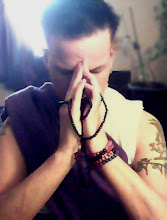I received an email today asking if The Buddha really was fat?
Actually, The Buddha was NOT fat.
In Buddhism there is a lot of symbolism in Buddhism I have compiled a few of the elements of The Buddha statue that is fairly universal:
* The earlobes are elongated, partly to indicate the Buddha is all-hearing and partly as a reminder of the heavy earrings that weighed them down before Siddhartha renounced material things to seek enlightenment.
* The Buddha's head is usually enlarged (sometimes by a large bump on top) to symbolize wisdom; a jewel in the bump denotes brilliance.
* The hair is generally curly. According to legend, after shearing off his long princely locks, Siddhartha from then on had a head of short, fine curls — not a common look in Asia and thus a distinguishing sign.
* A dot or protrusion in the center of the forehead represents power or an all-seeing eye.
* The fingers are long, slender, and usually finely webbed to indicate that the Buddha can "catch" people, similar to the Christian idea of Jesus the fisherman. Webbing also has the practical advantage of making the statue's delicate fingers less likely to break off.
* Often a stylized representation of light emanates from the Buddha, akin to a halo but usually encircling the entire body.
Different postures — standing, sitting lotus position (cross-legged), sitting half-lotus position (one leg hangs down to the ground), and lying down — represent different stages or aspects of the Buddha's life. The two lotus positions symbolize that Buddha, like the lotus plant, emerged from the mud to achieve enlightenment. The reclining Buddha usually represents his death, passing into nirvana and escaping the tedious cycle of life, death, and rebirth.
You didn't ask, but mystic hand gestures called mudra (Sanskrit for "seal" or "sign") are also a big deal in Buddhism. The five most common.
* Teaching mudra. Also called "turning the wheel of law." Used by the historical Buddha when preaching, the right hand is in front of the chest, palm outward, thumb and forefinger forming a circle. The left hand is beneath the right hand, also with thumb and forefinger touching, but palm inward. Variation: right hand at shoulder level pointing up and the left at hip level pointing down, both with palm outward and index finger and thumb forming circles; sometimes called the "reasoning" mudra.
* Fearlessness mudra. Upraised hand lifted above thigh, palm facing out, fingers pointing up, usually with middle finger slightly forward; means "fear not" and is a sign of protection.
* Welcoming mudra. Right hand pointing downward, palm facing out, often with middle finger slightly forward; means welcome, blessing, or charity.
* Meditation mudra. Found mostly on seated images. Both hands in lap, palms upward, usually right on top of left but sometimes fingers curled, thumbs touching to form a circle; indicates a state of, well, meditation.
* Earth-touching mudra. Statue in lotus position, with right hand hanging over right knee, palm inward, fingers (or just forefinger) touching the earth; left hand in lap, palm upward, sometimes holding a begging bowl. Symbolizes the Buddha "calling the earth to witness" his victory over temptation.
I will make another post on Mudras soon.
Subscribe to:
Post Comments (Atom)






No comments:
Post a Comment